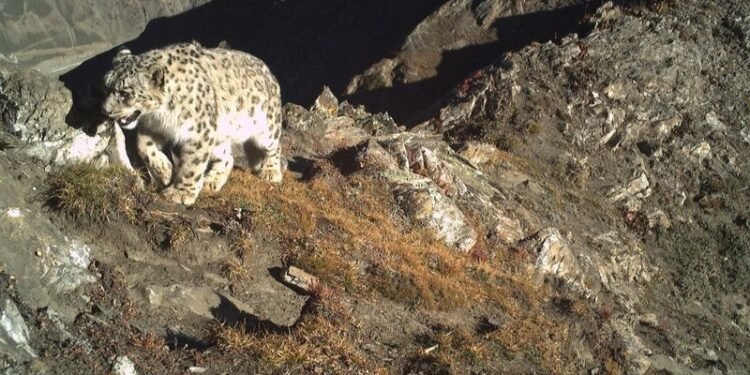New Delhi, Aug 19, 2025 : A three-year camera-trap study by the Nature Conservation Foundation (NCF) and the J&K Wildlife Protection Department has confirmed the year-round presence and breeding activity of snow leopards in Jammu and Kashmir—a major breakthrough for high-altitude biodiversity conservation in India.
Using over 3,000 camera traps across Kishtwar High Altitude National Park, Paddar, and Zojila, researchers identified at least 12 adult snow leopards, with an estimated population of up to 20 individuals. The presence of a mother with cubs in Kishtwar confirms this as a breeding population.
Conducted between 2022 and 2025 under the Snow Leopard Population Assessment in India protocol, the study revealed snow leopards even during winter months in Paddar (Jammu division) and Zojila (Kashmir division). This indicates year-round habitat use—a strong sign of population stability and residency.
“These findings reaffirm Jammu and Kashmir’s role as a key snow leopard stronghold. The Kishtwar Himalayas must be seen as part of a larger, interconnected conservation landscape,” said Dr. Shahid Hameed, research coordinator at NCF, praising the sustained efforts of the J&K Wildlife Department.
The survey also recorded 16 other mammal species, including the Himalayan brown bear, Himalayan wolf, common leopard, Kashmir musk deer, stone marten, pika, Asiatic ibex, and red fox. In some locations, snow leopards and common leopards appeared together, raising new questions about species overlap and the impact of climate change on range shifts.
The project was supported by the Royal Enfield Social Mission.



















